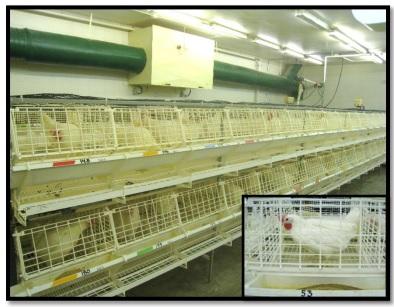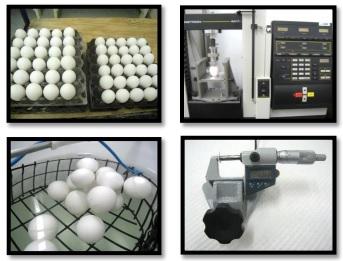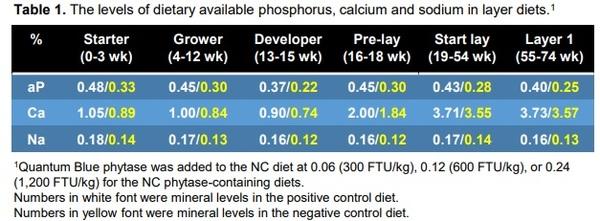Phytase use in layer diets
Published: August 22, 2023
By: Kooney Pongmanee and Doug Korver / Department of Agricultural, Food and Nutritional Science at the University of Alberta.
About the study
Phytase supplementation has become a standard practice for poultry diets to enhance phosphorus (P) utilization and subsequently reduce P excretion. Previous phytase studies on hen performance, eggshell and bone quality have been done over short durations and using hens of varying ages.
The knowledge gap is that there are no long-term phytase studies covering the rearing period through the end of production cycle.
The objective of this study was to investigate the long-term effects of phytase supplementation in diets with marginal reductions of aP and Ca on pullet performance and hen productivity, eggshell quality, bone mineralization, and P and Ca retention from pullet placement at 1 day to 74 wk of age.

Research Methods
400 H&N Nick Chick white egg pullets were assigned to 1 of 5 dietary treatments. The positive (PC) diet was formulated according to the primary breeder recommendation (Table 1).
The negative control (NC) diet, was similar to the PC but reduced in aP, Ca, and Na by 0.15%, 0.16%, and 0.035% of the diet (marginal reductions) in each phase. 300, 600, or 1,200 FTU phytase/kg was supplemented to the NC diets.
Data collection included egg production, eggshell quality, and bone mineralization.


Findings
The long-term, marginal reduction of dietary aP and Ca during pullet rearing and up to 74 wk of age did not adversely affect pullet performance and hen productivity.
The NC hens were able to meet their P and Ca requirements for growth and egg production. However, the birds fed the NC diets had some subtle cumulative effects on bone characteristics, suggesting that the NC diets were marginally deficient for these measures. Therefore, the aP and Ca requirements for egg production and eggshell quality differ from requirements for bone metabolism.
The current primary breeder recommendations for aP and Ca include considerable safety margins, and are likely substantially higher than actually required by birds. Hens were able to physiologically adapt to the reductions of dietary aP and Ca by increasing the efficiency of intestinal P and Ca absorption, coupled with reabsorption of these minerals at the kidney during short-term adaptation. In the long term, hens progressively mobilized structural bone and sacrificed bone Ca reserves to support egg production and shell quality. Hens can maintain good eggshell quality but with increased risk of bone mineral depletion or osteoporosis. Therefore, monitoring only eggshell quality may not sufficient to determine bone health status.
Marginal reductions of dietary aP and Ca in the long-term decreased bone mineral density (BMD) and bone mineral content (BMC) in the NC hens. Phytase at 600 and 1,200 FTU/kg in the NC diets restored BMD and BMC and maintained structural bone during the laying period.
Long-term phytase supplementation maintained bone health through the end of the production cycle. This suggests that dietary aP and Ca can be reduced to a greater degree than in our studies with supplementation of exogenous phytase. This would increase the efficacy of phytase and also allow producers to use lower quality feedstuffs with high phytate to reduce diet costs overall.
The use of phytase reduced diet costs by approximately CDN $4 to 11 per tonne in this study.

Conclusion
Marginal reductions of dietary aP and Ca in the long-term did not decrease egg production and eggshell quality, but had some subtle effects on bone quality in laying hens. The long-term phytase supplementation maintained bone health and to support egg production and eggshell quality through the end of production cycle.

Implications
Further reductions in dietary Ca and total P can also be achieved in order to take advantage of the ability of phytase to degrade phytate to increase P retention. This would reduce inorganic P usage which would subsequently decrease P excretion to the environment. Current primary breeder recommendations for pullet dietary Ca and aP are above the actual requirements of the birds. To make greater use of the Ca and P already in the diet through phytase supplementation, dietary Ca and P levels could be substantially below the recommended of the primary breeders, without compromising pullet performance, hen productivity, or bone quality.

Related topics:
Authors:
University of Alberta
Influencers who recommended :
Hossien Mohammadzadeh krateiRecommend
Comment
Share
20 de octubre de 2023
I believe that there are several methods of chemical analysis for the determination of phosphorus in feed, which give different results. Is there a standardized method for this, so as to be comparable?
Recommend
Reply
26 de agosto de 2023
Hello Dr. Korver
Can you share the diet composition and Ingredient/inclusions? If you want to, you can email them to entzgeorge20@gmail.com.
Many thanks.
Recommend
Reply

Would you like to discuss another topic? Create a new post to engage with experts in the community.











.jpg&w=3840&q=75)